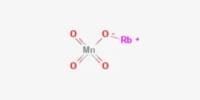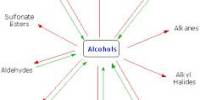Antimony telluride is an inorganic compound with the chemical formula Sb2Te3. It’s a prominent material in the field of thermoelectrics, which are devices that convert heat into electricity and vice versa. As is true of other pnictogen chalcogenide layered materials, it is a grey crystalline solid with layered structure.
Layers consist of two atomic sheets of antimony and three atomic sheets of tellurium and are held together by weak van der Waals forces. Sb2Te3 is a narrow-gap semiconductor with a band gap 0.21 eV; it is also a topological insulator, and thus exhibits thickness-dependent physical properties.
Properties
Antimony telluride has a high thermoelectric figure of merit (ZT), making it effective for applications in power generation and refrigeration.It exhibits interesting phase change properties, which make it useful in data storage technologies, particularly in phase change memory (PCM). It typically forms in a rhombohedral crystal structure.
- Chemical formula: Sb2Te3
- Molar mass: 626.32 g·mol−1
- Appearance: grey solid
- Density: 6.50 g cm−3
- Melting point: 620 °C (1,148 °F; 893 K)
- Band gap: 0.21 eV
- Thermal conductivity: 1.65 W/(m·K) (308 K)
Synthesis
Although antimony telluride is a naturally occurring compound, select stoichiometric compounds may be formed by the reaction of antimony with tellurium at 500–900 °C.
2 Sb(l) + 3 Te(l) → Sb2Te3(l)
Occurrences
- Natural Sources: Antimony telluride can be found in nature but is rare. It is typically associated with other telluride minerals and can be found in certain hydrothermal veins.
- Synthetic Production: Most antimony telluride is produced synthetically for industrial applications. This involves methods like solid-state reactions or chemical vapor deposition.
Applications
Like other binary chalcogenides of antimony and bismuth, Sb2Te3 has been investigated for its semiconductor properties. It can be transformed into both n-type and p-type semiconductors by doping with an appropriate dopant.
- Thermoelectric Devices: Used in coolers and power generation systems, especially for waste heat recovery.
- Data Storage: In phase change memory, it allows for the storage of data by changing its phase between amorphous and crystalline states.
















